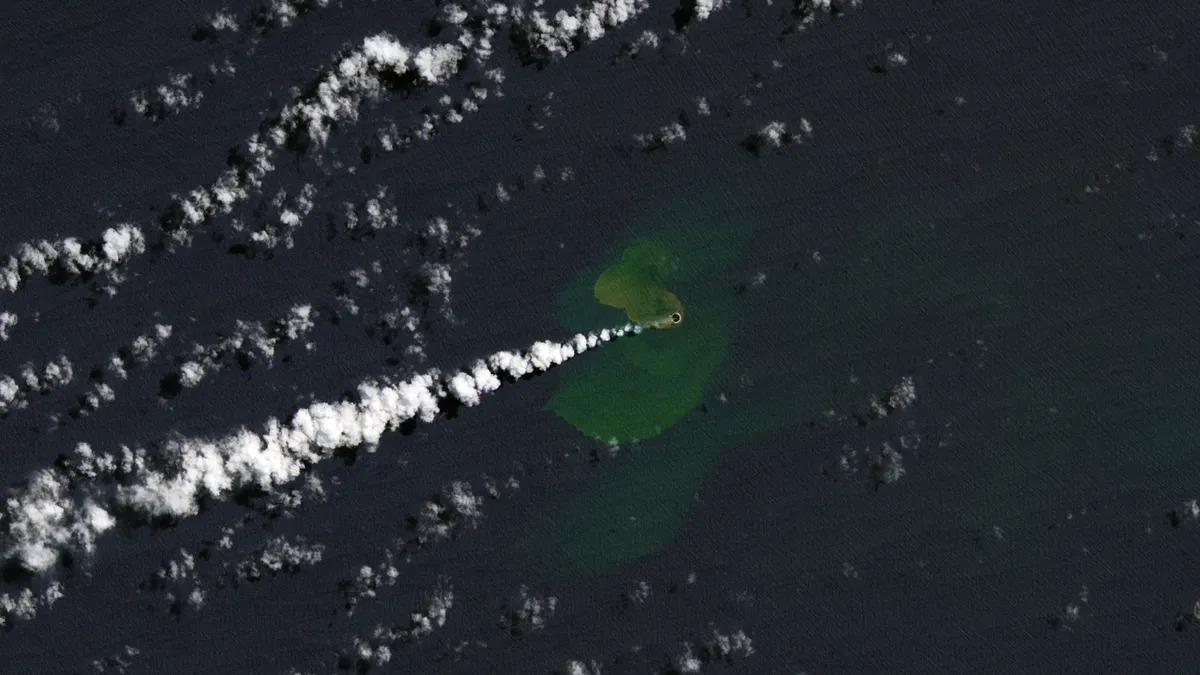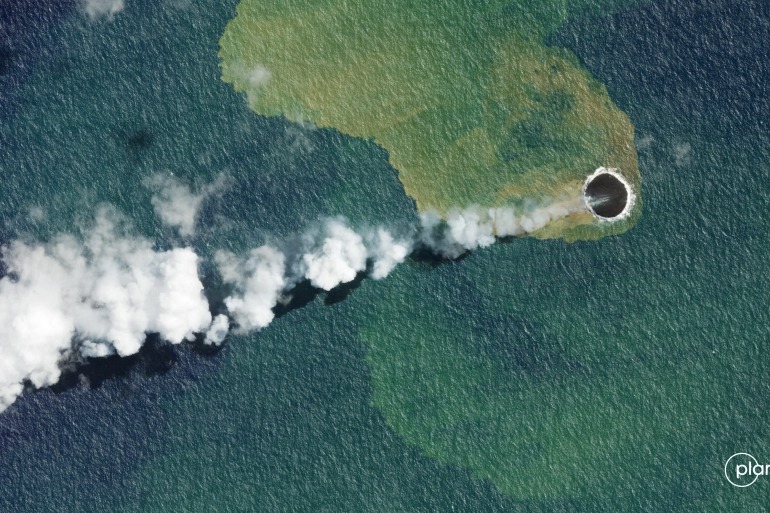At the beginning of 2022, the world was struck by a powerful eruption of the Tonga volcano in the Pacific Ocean, comparable to the nuclear explosion of 500 Hiroshima. Last week, NASA Earth Observatory shared photos of the area that the satellite viewed nine months after the incident. The image shows discolored water, plumes of ash and lava. But the satellite’s attention was attracted by a new eruption in the archipelago – after 16 years of hibernation, another volcano woke up.

The eruption of the underwater volcano on September 10, known as the Home Reef, turned out to be much weaker than the January one. But even its power was enough to create a new island. Moreover, the island was formed in just 11 hours. The water around the site has a greenish tint. “Previous studies show that the color of the water is formed due to superheated acidic seawater, which contains solid particles of the eruption, fragments of volcanic rocks and is saturated with sulfur,” NASA said.

The Geological Survey of Tonga notes that the island has a total area of 3.5 hectares and rises about 15 meters above sea level. The agency adds that the volcano poses a danger to nearby communities and recommends that all sailors stay away from the eruption zone.
Whether this island will continue to exist is unknown. For sometimes such newly formed volcanic islands remain, and sometimes they are destroyed. The eruption of the Home Reef was active in 1852, 1857, 1984 and 2006. All the islands formed as a result of eruptions, and even the lagoon, were destroyed in a year or two by Pacific waves. This time the formed island turned out to be much smaller, so there are high chances that it will also be destroyed.
According to CNET
Follow us on Twitter to get the most interesting space news in time
https://twitter.com/ust_magazine

